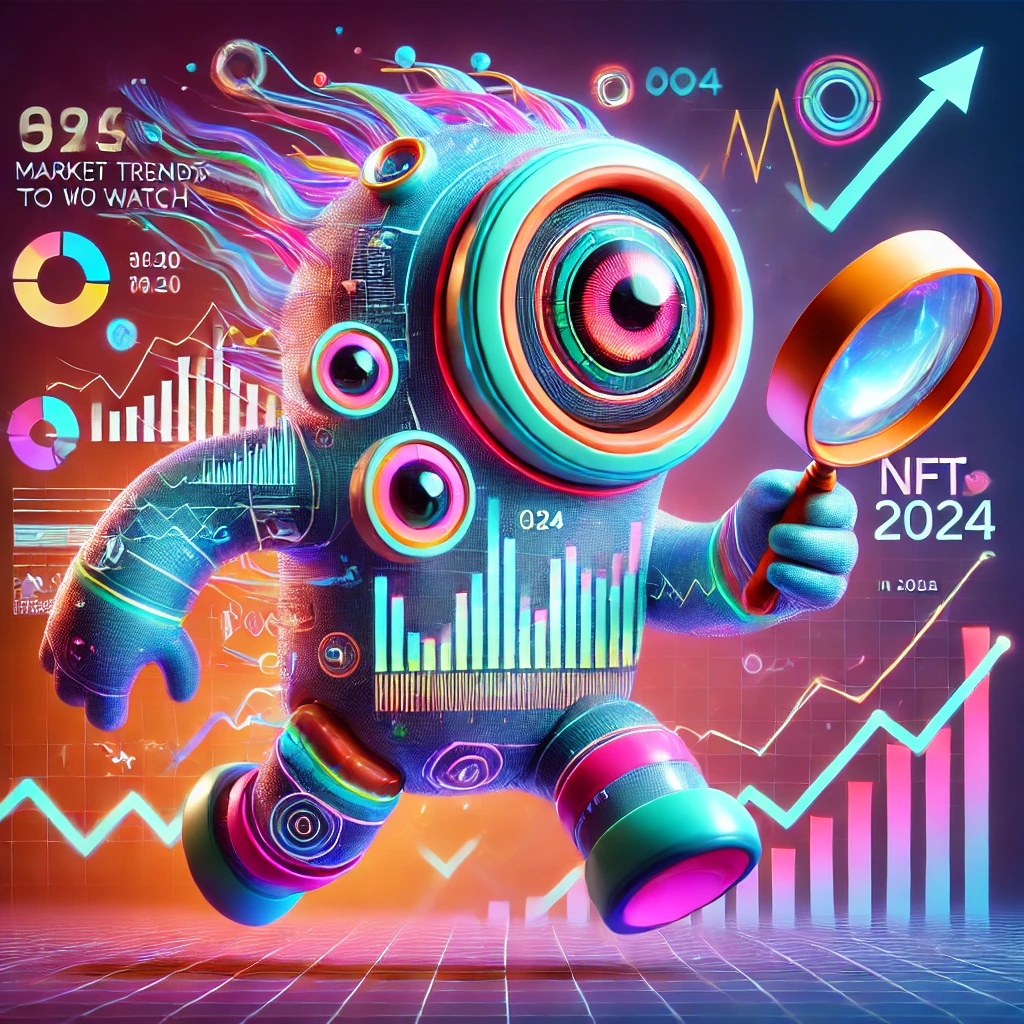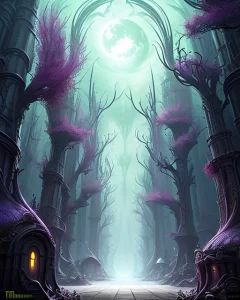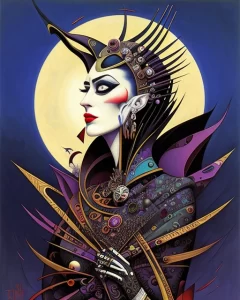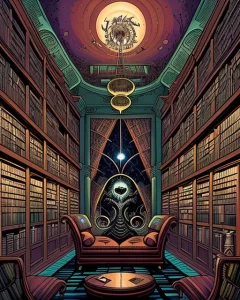The NFT (Non-Fungible Token) market, once a niche phenomenon, has irrevocably transformed into a multi-billion dollar industry. Its rapid ascension into the mainstream, fueled by its ability to tokenize digital assets and revolutionize the way we interact with the digital world, has attracted both enthusiasts and skeptics. As we stand on the precipice of 2024, the NFT landscape is poised for even more exciting developments. This article will delve into the key trends that will shape the future of NFTs, providing insights into the opportunities and challenges that lie ahead.
Table of Contents:
The Rise of Utility NFTs
Gone are the days when NFTs were solely associated with digital art. While the art market remains a significant segment, the focus is shifting towards utility NFTs, which serve a practical purpose beyond mere ownership. These NFTs are integrated into real-world services and applications, unlocking unique benefits for holders. This trend is driven by the growing recognition of NFTs as powerful tools for building communities, fostering loyalty, and creating new business models.
One prominent example of utility NFTs is in the gaming industry. NFTs are being used to represent in-game assets, such as characters, weapons, and virtual land. By leveraging blockchain technology, game developers can ensure the authenticity and scarcity of these assets, creating a more immersive and engaging gaming experience for players. Moreover, players can trade these NFTs freely, creating a vibrant secondary market for in-game items.
Beyond gaming, utility NFTs are finding applications in various sectors. In the music industry, NFTs can provide access to exclusive content, behind-the-scenes experiences, or even a portion of the artist’s royalties. In the sports industry, NFTs can represent tickets to games, memorabilia, or even athlete endorsements.
Examples of Utility NFTs
– Membership NFTs: Granting access to exclusive communities, events, or services.
– Loyalty NFTs: Providing rewards and benefits to loyal customers.
– Gaming NFTs: Representing unique in-game assets, characters, or virtual land.
– Event Ticketing NFTs: Offering access to concerts, conferences, or sporting events.
– Tokenized Real Estate: Representing ownership of physical properties.
Interoperability and Cross-Chain Compatibility
The current NFT landscape is fragmented, with different blockchains supporting their own unique ecosystems and NFTs. This siloed approach limits interoperability, making it difficult for NFTs to seamlessly move between chains, hindering their full potential.
In 2024, interoperability is expected to take center stage as the industry seeks to bridge these silos and create a more unified NFT ecosystem. Cross-chain compatibility will enable NFTs to move freely between different blockchains, opening up new possibilities for trading, usage, and adoption. This will empower creators and developers to build more sophisticated applications, leveraging the strengths of different blockchain platforms.
This trend can be observed in the emergence of interoperability protocols and solutions. For example, projects are being developed to enable cross-chain NFT transfers, allowing users to bridge their NFTs between Ethereum, Solana, and other blockchains. These protocols provide the necessary infrastructure for a more interconnected and seamless NFT experience.
Key Benefits of Interoperability
– Increased liquidity and market size: NFTs can be traded on a wider range of platforms, boosting their value and accessibility.
– Enhanced functionality: NFTs can be used in a broader range of applications, leveraging the strengths of different blockchain platforms.
– Greater adoption: Easier integration and use across different platforms drive wider adoption.
– Reduced friction: Seamless transfer between chains removes barriers and enhances user experience.
NFTs in the Metaverse
The metaverse, a virtual world where users can interact and experience immersive digital environments, is rapidly gaining momentum. NFTs are playing a crucial role in shaping this burgeoning space, serving as the building blocks for digital ownership and identity.
NFTs are empowering users to own virtual assets like avatars, clothing, land, and other digital objects within the metaverse. These assets are authenticated and secured by blockchain technology, ensuring their scarcity and ownership. The unique characteristics and functionality of these NFTs can enhance the user experience, allowing users to personalize their virtual identities and participate in virtual economies.
One notable example is Decentraland, a decentralized metaverse platform where users can buy and sell virtual land using NFTs. These plots of land represent a unique piece of the virtual world, and their ownership is recorded on the blockchain, providing irrefutable proof of title.
The convergence of NFTs and the metaverse is unleashing a wave of innovation, creating exciting opportunities for creators, developers, and users. This trend is expected to accelerate in 2024, as more applications and platforms emerge, further blurring the lines between the physical and virtual worlds.
Examples of NFTs in the Metaverse
– Virtual Land NFTs: Representing ownership of digital real estate within metaverse platforms.
– Avatar NFTs: Allowing users to create unique and customizable virtual representations of themselves.
– Wearable NFTs: Providing digital clothing and accessories for avatars to personalize their appearance.
– Virtual Item NFTs: Representing in-world items, such as tools, weapons, or collectibles.
– Virtual Event NFTs: Granting access to exclusive virtual concerts, conferences, or exhibitions.
The Rise of Fractionalized NFTs
Traditional NFTs, by their nature, represent ownership of a single, indivisible asset. However, the rise of fractionalized NFTs is challenging this notion, enabling the ownership of digital assets to be split into smaller, more accessible units.
Fractionalized NFTs, also known as “NFT slices,” allow multiple individuals to collectively own a valuable asset, like a piece of digital art or a piece of real estate, by dividing it into fractions. This democratizes access to high-value assets, making them more affordable for a wider audience. It also facilitates greater liquidity, allowing investors to buy and sell fractions of assets with relative ease.
This trend has particular relevance for the art market, where iconic pieces can be prohibitively expensive for many collectors. By fractionalizing a valuable artwork, investors can gain exposure to a piece they might otherwise not be able to afford. This also fosters wider distribution of art ownership, enabling a broader audience to participate in the art market.
Benefits of Fractionalized NFTs
– Increased Accessibility: Makes high-value assets more affordable for a wider range of investors.
– Enhanced Liquidity: Allows investors to trade fractions of assets with greater ease.
– Diversification: Enables a more diversified portfolio by investing in smaller portions of multiple assets.
– Democratization of Ownership: Opens up opportunities for broader participation in asset ownership.
The Evolution of NFT Marketplaces
The NFT marketplace landscape is continually evolving, with new platforms emerging and existing platforms refining their offerings. In 2024, we can expect to see a greater focus on user experience, security, and accessibility, as platforms strive to attract, retain, and cater to a larger audience.
One key trend is the emergence of specialized NFT marketplaces catering to specific niches, such as gaming, music, or sports. This allows for a more curated and targeted experience for collectors and creators, fostering greater community engagement and value creation within these specific sectors.
Another significant trend is the integration of traditional financial services into NFT marketplaces. Platforms are exploring ways to provide services like lending, borrowing, and asset management within their ecosystem. This fosters greater financial utility for NFTs, making them more accessible to a wider range of investors.
Key Trends in NFT Marketplaces
– Specialization: Niche marketplaces catering to specific industries or sectors.
– User Experience: Improved user interfaces, intuitive navigation, and enhanced discovery tools.
– Security: Robust security measures to protect users and assets from fraud and theft.
– Accessibility: Simpler onboarding processes and support for various wallets and payment methods.
– Financial Services: Integration of lending, borrowing, and asset management features.
Regulatory Landscape and Legal Considerations
The legal and regulatory landscape surrounding NFTs remains in a state of evolution. In 2024, we can expect to see greater clarity and standardization as governments and regulatory bodies worldwide grapple with the implications of this emerging technology.
One of the key areas of focus is the classification of NFTs. Whether NFTs are considered securities, commodities, or another asset class will have significant implications for taxation, regulatory oversight, and investor protection.
Another critical area is the protection of intellectual property rights. As NFTs become more mainstream, questions arise around the ownership and infringement of copyrights, trademarks, and other intellectual property associated with these digital assets.
Navigating these legal and regulatory complexities will be crucial for the long-term sustainability and growth of the NFT market. Clear guidelines and frameworks will provide much-needed certainty for creators, investors, and businesses operating in this space.
Key Regulatory Issues
– Classification of NFTs: Determining the legal status of NFTs and their implications for taxation and regulation.
– Intellectual Property Protection: Safeguarding copyright, trademark, and other intellectual property rights associated with NFTs.
– Anti-Money Laundering (AML) and Know Your Customer (KYC): Implementing measures to prevent illicit activities and ensure compliance with financial regulations.
– Consumer Protection: Establishing safeguards to prevent scams, fraud, and investor losses.
Sustainability and Environmental Impact
The environmental impact of NFTs has been a subject of considerable debate, particularly due to the energy consumption associated with certain blockchain platforms. As the NFT market matures, sustainability is becoming an increasingly important consideration for both creators and collectors.
In 2024, we can anticipate a greater emphasis on environmentally friendly solutions within the NFT ecosystem. This includes the adoption of energy-efficient blockchain platforms, the use of renewable energy sources for mining, and the development of carbon offsetting initiatives.
Moreover, there is a growing awareness of the importance of responsible NFT creation and consumption. Creators are being encouraged to explore more sustainable approaches, while collectors are becoming increasingly mindful of the environmental impact of their digital purchases.
Addressing Sustainability Concerns
– Transitioning to Energy-Efficient Blockchains: Migrating to platforms with lower energy consumption.
– Renewable Energy Sources: Utilizing renewable energy for blockchain mining and data centers.
– Carbon Offsetting: Compensating for carbon emissions through projects that support carbon sequestration or reduction.
– Responsible NFT Creation: Encouraging creators to minimize energy consumption during the creation process.
The Future of NFTs: A Confluence of Trends
The NFT market is poised for continued growth and evolution in 2024 and beyond. The trends outlined above, from utility NFTs and interoperability to the metaverse and sustainability, are converging to create a more sophisticated, diverse, and interconnected ecosystem.
The integration of NFTs into various sectors, their growing utility beyond mere ownership, and their role in shaping the metaverse are driving widespread adoption and innovation. As the industry tackles regulatory challenges, addresses sustainability concerns, and embraces new technologies, the future of NFTs holds immense potential for both creators and users.
The convergence of these trends is blurring the lines between physical and digital assets, transforming the way we interact with the world around us. By embracing these developments, the NFT market is paving the way for a more decentralized, inclusive, and innovative future.
Conclusion
The NFT market is undergoing a period of rapid transformation, with new trends emerging and existing ones evolving. From utility NFTs and interoperability to the metaverse and sustainability, the developments in the NFT landscape are shaping a future where digital ownership, creativity, and innovation are intertwined.
While there are challenges to overcome, such as regulatory clarity, environmental concerns, and the need for greater accessibility, the potential of NFTs to revolutionize various industries and enhance our digital experiences is undeniable. 2024 is poised to be a pivotal year for the NFT market, as these trends converge and shape the future of this dynamic and evolving space.
Q&A
Here are some common questions about NFT market trends in 2024:
Q: What are the key trends driving the NFT market in 2024?
A: Some of the key trends driving the NFT market in 2024 include the rise of utility NFTs, interoperability and cross-chain compatibility, NFTs in the metaverse, fractionalized NFTs, the evolution of NFT marketplaces, and the growing focus on sustainability and regulatory considerations.
Q: What are utility NFTs, and how are they different from traditional NFTs?
A: Utility NFTs are NFTs that have a practical purpose beyond mere ownership. While traditional NFTs typically represent ownership of a digital asset, like a piece of art, utility NFTs are integrated into real-world services and applications, providing unique benefits to holders. For example, a utility NFT could unlock access to a private online community, provide loyalty rewards, or represent a virtual item in a video game.
Q: What are the benefits of interoperability in the NFT market?
A: Interoperability enables NFTs to move freely between different blockchains, enhancing liquidity, functionality, and adoption. By bridging the silos between different blockchain ecosystems, interoperability allows for seamless NFT transfers, greater trading opportunities, and the development of more sophisticated applications that leverage the strengths of multiple blockchains.
Q: How are NFTs being used in the metaverse?
A: NFTs are playing a crucial role in shaping the metaverse, serving as the foundation for digital ownership and identity. In the metaverse, NFTs can represent ownership of virtual assets, such as avatars, clothing, land, and in-world items. This enables users to create personalized virtual identities, participate in virtual economies, and enhance their immersive experiences.
Q: What are fractionalized NFTs, and how do they work?
A: Fractionalized NFTs, or NFT slices, allow for the ownership of a single asset to be split into smaller, more accessible units. This makes high-value assets more affordable for a wider range of investors, promotes greater liquidity, and democratizes access to ownership. For example, a valuable piece of art can be fractionalized, allowing multiple individuals to collectively own a portion of the asset.
Q: What are the implications of regulatory developments for the NFT market?
A: Regulatory developments around NFTs will have significant implications for the market’s growth and sustainability. Clear guidelines and frameworks regarding the classification of NFTs, the protection of intellectual property rights, and consumer protection measures are crucial for fostering investor confidence, reducing risks, and creating a more stable environment for creators and businesses.
Q: What are the sustainability concerns related to NFTs, and how are they being addressed?
A: The energy consumption associated with certain blockchain platforms has raised concerns about the environmental impact of NFTs. However, the industry is actively addressing these concerns by exploring energy-efficient solutions, such as migrating to platforms with lower energy consumption, utilizing renewable energy sources, and developing carbon offsetting initiatives. By adopting more sustainable practices, the NFT market can help mitigate its environmental impact and contribute to a more responsible digital economy.






